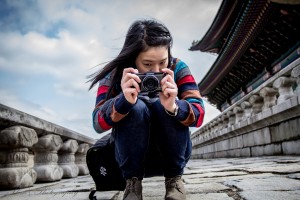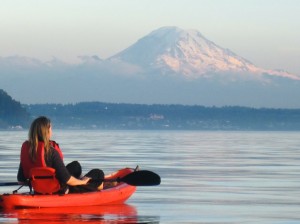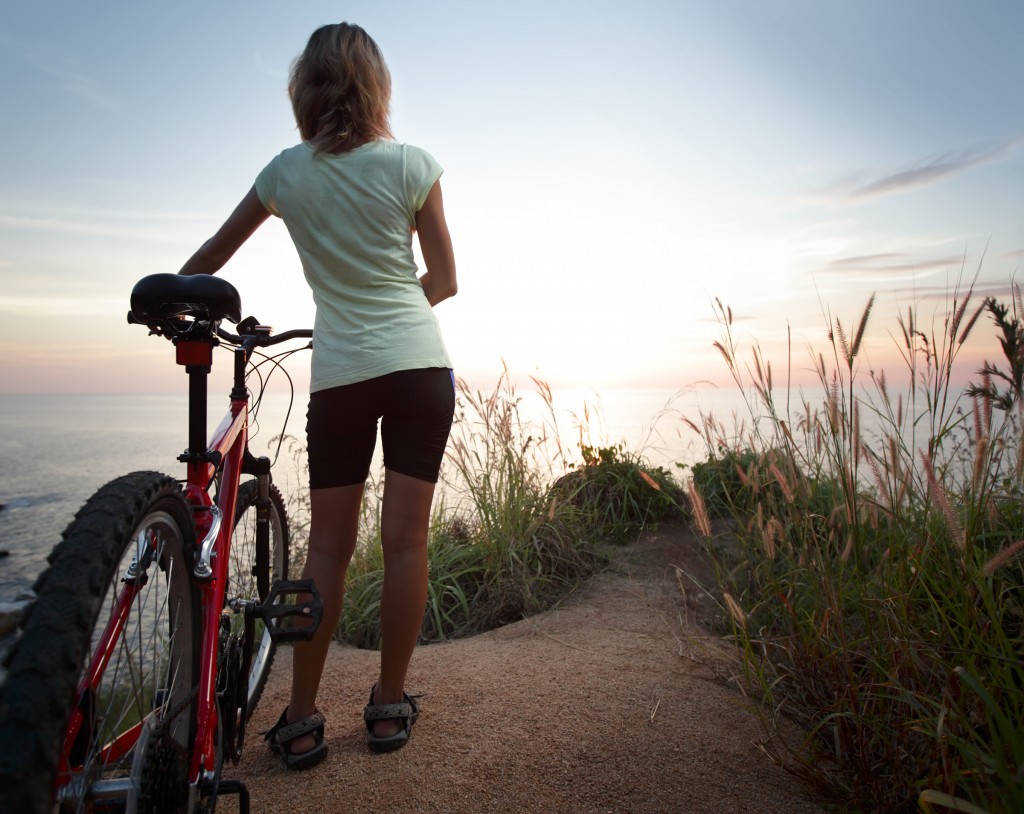- 63% of over 100,000 bookings made by Intrepid Travel last year were made by women.
- 54% of travelers considered affluent by a MMGY Global study are women.
- 65% of clients booking adventure trips on TourRadar.com are women.
- 66% of US women polled by Booking.com have vacationed without her partner.
- 53% increase in demand is what Small Luxury Hotels noticed for single female bookings between 2011 and 2012.
This contingency is a mix of business and leisure travelers, and this is a change that the industry can’t ignore. There are no best practices for accommodating this new majority, but operators who pay attention to the needs of the solo female traveler will likely see rewards when she speaks favorably about you to her cohort.
A Safer, More Connected World

Staying connected to friends and family while traveling is either a cause or effect of the phenomenon of the rise of the solo female traveler. A study by Booking.com brought this to light in April 2014. Even though the study was part of an ad campaign to encourage bookings by women (their “Booking Brianless” video is worth a view to see how the accommodation sector is treating this trend), the findings make sense. The study looked at women aged 25 - 45 from the U.K., U.S., Australia, Canada and Germany. Of the 500 U.S. participants of the study, 58% said that social media made them feel safer when traveling on their own. While it’s not clear what the relationship is between safety and connectivity, this feeling of virtual connection is spurring many changes in traveler behavior, including the trend of “flashpacking”. Staying tethered to home through mobile devices and social media, travelers feel less alone when they are on the road by themselves and more likely to travel solo as a result.
Stacy Small, founder of Elite Travel International, told Skift that she has noticed an increase in women booking solo trips through her agency and relates that increase back to social media: “As a female who has traveled to many countries solo, I can attest to the fact that being able to stay in touch with friends, colleagues, hoteliers, and clients around the world via social media adds a comfort level that did not exist prior to the advent of Twitter and Facebook.”
Then again, Seattle Times blogger Thanh Tan traveled alone along the Pacific Coast in the Northern U.S. and Canada and intentionally unplugged. She deleted all her social media apps from her phone to minimize temptation and made bookings ahead of time so she didn’t need wi-fi day-to-day on her trip. “Not only do I believe it’s healthy to travel solo once in a while,” Tan concluded, “ I’m now certain that some of us must intentionally unplug from technology to declutter our minds. You don’t realize how much you’ve come to rely on friends and your phone for connection and stimulation...until they are no longer at your fingertips.”
Whether or not a woman is documenting her every move on social media or blogging her way through a journey, the U.S. Travel Insurance Association website TRIP recommends that women traveling alone have a mobile phone with them at the very least that can be used in all the countries on her itinerary in case of emergency. Other safety tips include taking photos of things like your hotel entrance and room number and any train stations or bus stops you’ve recently visited, so that authorities can retrace your steps in case you get into trouble.
Adventurous Spirits

While there is a market for luxury vacations for women that focus on relaxation and spa treatments (leading some hotels to create women-only floors and stock rooms with things like women’s magazines and hair straighteners), most women are looking to have “experiences” when they travel. They want to leave the hotel as much or more than the next traveler and they want to feel safe when they go out.
Phyllis Stoller of the Women’s Travel Group, which specializes in women-only tours, told Solimar that women are more adventurous than men: “Women are always seeking unusual and new destinations while men are more satisfied with the more predictable golf resort destinations.” She says 75% of those who book adventure travel or trips that have a focus on culture or nature are women.
Adventure-seeking is what is leading women to book trips through TourRadar.com, which specializes in adventure travel (including many ATTA members). TourRadar also focuses on group trips, which is the perfect compromise for solo female travelers who need equal parts safety and adventure.
“Many financially secure women have the urge to travel and no longer feel the need to wait for the right partner to accompany them,” says TourRadar CEO Travis Pittman. “Their families sometimes worry about safety issues. That’s why they’re choosing to go with group tours, which offer the thrill of adventure travel without the potential loneliness or danger of going completely solo.”
TourRadar’s data also shows that women are willing to spend more money on solo travel than men (perhaps paying for additional security or peace of mind) and that they often join group travel for only a portion of their trip -- especially more experienced female solo travelers. They will tend to use group travel initially on a trip and then continue on exploring on their own.
Accounting for Business and Pleasure
As much as it would suit the ATTA and our industry specifically, the fact that women travel alone for adventure doesn’t account for their rise to majority status. Fact is, there are a lot more women traveling on business, and nowhere is that demographic booming faster than in Asia. Karun Budhraja is the VP Corporate & Marketing Communications for Amadeus Asia Pacific. “We estimate that in 2011 there were approximately 4.5 million international trips by women from the seven [Asian] countries that we have studied,” she wrote on the company’s blog, “but by 2030 this will have increased by 400%.”
She says that travel providers need to focus on accommodating these new business travelers by addressing safety issues, but they also need to make adjustments to how they communicate with women. “Women use different processes than men to make travel decisions, for example greater reliance on peer recommendations or advice, so responding to this will be critical for travel providers to win over the female traveller.”
Luxperience reiterates this reliance on peer recommendation, especially in the Asia Pacific market: “Women are known to do their research through peer-to-peer recommendation,” writes Michelle Pappas in a press release. Her advice for travel marketers and operators: “Win over the female travel sector through ‘real’ and effective engagement on your social media channels.”
When it comes to marketing to female solo travelers on business or vacation, there is agreement that getting rid of single supplements is key to attracting this growing demographic. “Women are frustrated with the premium applied by some travel companies for traveling alone,” says Phyllis Stoller. “Some trips actually penalize solo travelers.” Cruise lines are especially guilty of this practice. It’s not always financially possible for operators to charge one person the same price as a couple, but it is certainly something to consider for travel organizations that want to appeal to this rising demographic.
Women are traveling solo at all ages. The Booking.com survey focused on women ages 25 - 45; this is the group that is growing because of shifting demographics in countries like the U.S. and Australia toward more single, financially independent women. But older women are part of this trend, too, due to the “growing longevity and vitality of those in their senior years,” according to Phyllis Stoller.
In Our Own Words
In June, the Adventure Travel Trade Association plans to release AdventurePulse, our original research profiling adventure travelers in the U.S. Preliminary data shows evidence of corroborating many of these trends regarding female travelers. We found that women tend to like peer-to-peer recommendations and after a trip they are highly likely to use word-of-mouth channels like social media or traditional face-to-face communication to tell their friends about their trip. To access more specific data about female travelers and more about adventure travel trends, visit the ATTA’s research page, where AdventurePulse will be available for download when it is released.

